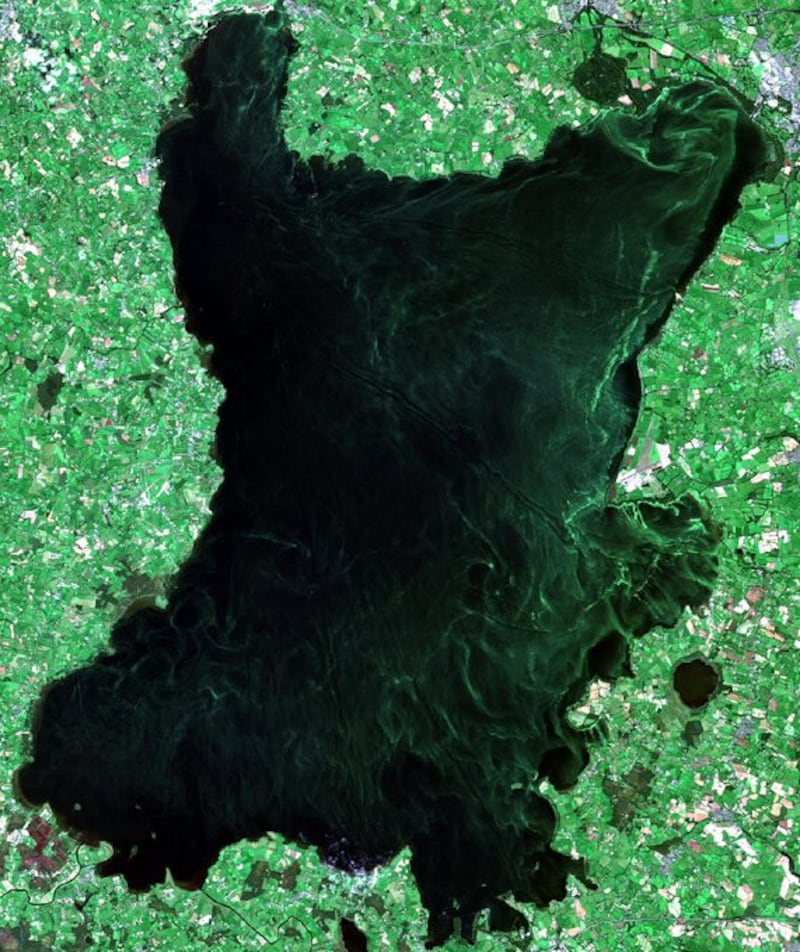We’ve seen many recent examples of people and nations claiming ownership where none rightfully exists. For instance, the plight of Ukraine has never looked bleaker with the despot Putin emboldened by the reluctance of the US to release much-needed aid.
I doubt time alone will ever bequeath legitimacy to Russia’s claim over its neighbour. When the Grim Reaper eventually deals with Putin, more rational Russian leadership will hopefully recognise the illegality of his invasion.
Still, history has all too often proved that even with respect to nation states, possession is nine-tenths of the law, meaning ownership is easier to maintain if one has possession of something.
We have our own version of this in the shape of the Earl of Shaftesbury’s claim on Lough Neagh. Andrew Muir, our new Minister of Agriculture, Environment and Rural Affairs, met with the Dorset-based landlord to discuss future management options following the catastrophic blue-green algae bloom which blighted the lough last summer.
Many have demanded that the Lough be taken back into public ownership; however, the earl has made it clear that while he is open to selling the lough, he has no intention of ‘giving it away’.
Which brings us to the crux of the matter, how can you ‘give away’ what you never rightly owned in the first place?
The lough was gifted to the Chichester family during the plantation of Ulster, in effect a form of war booty. It was then transferred to another English aristocratic family, the Shaftesburys, in the 19th century. In effect, the lough was passed between English aristocracy who had no legal, cultural or geographic link to Ireland, apart from having invaded and colonised the country.

Surely it’s time that we called out Earl of Shaftesbury for being unwilling to do the decent thing and pay to restore the lough to the state it was in when his family got it. If that happened, I guarantee the millionaire earl would be on the first plane back to his inherited ancestral mansion in Dorset.
The plunder of empire stretches from the shores of Lough Neagh to the British Museum where the Parthenon Marbles remain a contentious issue. Many will know them better as the Elgin Marbles but I refuse to use that name at it relates to the pilfering English lord responsible for chiselling them off the Parthenon in Athens in the 1800s.
It’s hard to imagine a more egregious example of cultural vandalism, something a contemporary of Elgin, Lord Byron, recognised, calling their removal a form of “looting” or, in today’s parlance, an extreme example of ‘cultural appropriation’.
The plunder of empire stretches from the shores of Lough Neagh to the British Museum where the Parthenon Marbles remain a contentious issue
The Greek government continues to demand their return, highlighting their exceptional cultural importance to Greece. The UK government and British Museum counter-argue that their return would set a precedent which could undermine the collections of major museums worldwide. In other words, we hold what we have, something Putin would most certainly agree with.
One argument often used by those who wish for colonial plunder to remain in London is that the British Museum is uniquely able to maintain treasures such as the Parthenon Marbles. This no longer holds true following the opening of a state-of-the-art Acropolis Museum to display them back home in Athens.
The Greek government have offered to exchange other antiquities with the British Museum to replace the marbles if they’re returned. In so doing, they have highlighted a way for museums to share rather than own the world’s antiquities.
The other argument used for the retention of such items in the British Museum is that it offers the best possible security. This conceit was blown out of the water recently with the discovery that over 1,500 items have been stolen from the museum over a considerable period of time, with serious security failures including woefully inadequate documentation of artefacts in storage, meaning the actual number of losses is anyone’s guess.
While the sun has long set on the British Empire, its nefarious history of cultural theft is clear to see within the walls of its many museums. The Parthenon Marbles belong to Greece - return them, along with the Asante Gold Regalia to Ghana and the Benin Bronzes to Benin. And while you’re at it, grab a pair of pliers and remove the Koh-i-Noor diamond from the British Crown Jewels and send it home to India, because all were stolen and should be returned.








